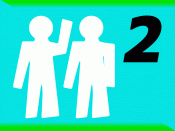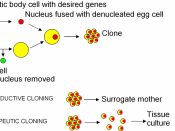Definition of cloning I
Cloning is the process of creating an identical copy of an original. It is a single cell or multi-cellular organism that is genetically identical to another living organism. Cloning can also occur when two genetically identical individuals are produced by accident like identical twins, but in common scientific language the clone is an identical copy by some conscious design. Cloning an organism is to create a new organism with the same genetic information as an existing one. This can involve the transfer of a cell nuclear in which the nucleus is removed from an egg cell and replaced with a nucleus extracted from a cell of the organism to be cloned. AS the nucleus contains all of the genetic information of life, the receiving egg cell will develop into an organism genetically identical to the original nucleus.
Brief history II
Cloning started with frogs and toads back into the 1970s.
Experiments have been long performed with plants and animal embryos. The "Dolly" is the first fully grown mammal to be cloned in 1996. The dolly was developing by using the process call somatic cell nuclear transfer which consists of "DNA coming from a single cell taken from her mother egg, which is fused with the mammary cell. The fused cell then develops into an embryo, which is implanted in a "surrogate" sheep. The embryo grows into a lamb, which is genetically identical to the donor sheep" (Dr. Lee Silver, Human Cloning, 1998).After the dolly, cows was being clone in 1998, pigs in 2000. The first cat was cloned in2001and in2004 a bull was cloned. With this successful process of the dolly scientists believe that human cloning may be possible. The first human cloned embryos were not until 2001. Currently there are a lot of...


